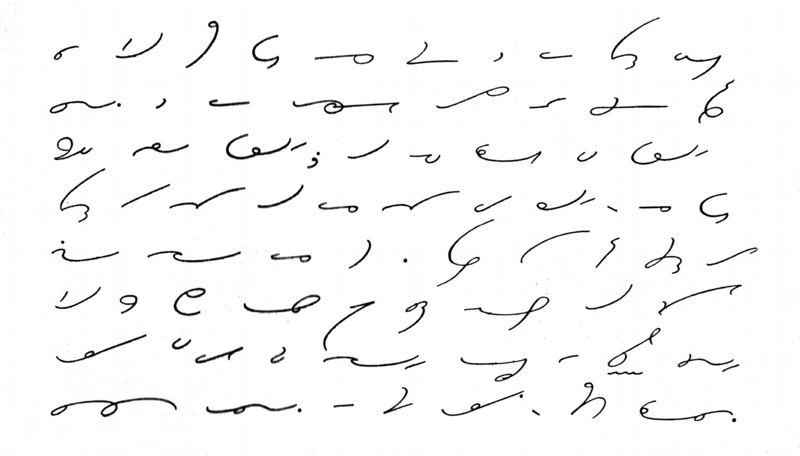My daughter and I just watched the movie Spotlight, about The Boston Globe reporters’ 2001 investigation into the Catholic Church’s knowledge of abuse by priests. Excellent movie. At one point I commented on the reporter’s use of shorthand, and my daughter, who is in her late 20s, didn’t know what I was talking about. Which makes it a great topic for a blog post.
Shorthand, also known as stenography, is a system of symbols and abbreviations that allow for fast and accurate writing. This has been used to record meetings, legislative sessions, court proceedings, and more recently, dictation of business letters and reports. Using shorthand, you can record exactly what is said at the speaker’s normal speaking pace. It’s like learning another language and translating it onto the page, then translating it back into the original language for the final copy.
I was surprised to learn that methods of shorthand were used in ancient Egypt, classical Greece and the Roman Empire, and have been used continually throughout history. Even during medieval times, when literacy levels were low and literacy was a matter of status and rank, there were forms of shorthand.
The two systems that have been most popular in the last couple of centuries in the United Kingdom and the United States are the Pitman and Gregg methods. Both have been adapted to languages other than English, which I find really interesting. I always thought the little squiggly lines represent words, but since I’ve learned that the lines often represent letters, adaptations are more understandable.
Englishman Sir Isaac Pitman (1813-1897) was a teacher and advocate for reforming English language spelling to make it more uniform. That obviously didn’t work, but it did lead him to create Pitman Shorthand in 1837. This version was used more in the United Kingdom and their colonies.

From the 1897 book Eclectic Shorthand by Cross. Scanned by Marlow4 and placed in public domain. It shows shorthand method of Isaac Pitman. Photo by Cross via Wikimedia Commons
Irishman John Robert Gregg (1867-1948) had used Pitman Shorthand and made changes to create his own version, Gregg Shorthand, which was published in brochure form in 1888. He emigrated to the United States in 1893 and published his method as a book that same year. This version was used more in the United States.

Part of a text written in Gregg shorthand, in English, from John Robert Gregg’s book “Gregg Shorthand. A Light-Line Phonography for the Million”, 1916, page 153. Photo text from C. R. Needham, written in shorthand by Hubert A. Hagar via Wikimedia Commons
Shorthand has not completely disappeared, though it has sharply declined over the past fifty years due to the availability of recording equipment. I understand journalists are still required to pass a timed writing test assuring they will be able to take notes quickly and accurately, but who knows how long that will last. Because there are few people who still know how to write and translate shorthand, there are often opportunities for them to translate diaries and other documents that people wrote in shorthand, but were never translated. So if you want to start a business and you either know, or are willing to learn shorthand…
My mother learned shorthand in high school, but I don’t remember it being available when I was in high school. Anybody else out there learn shorthand? Do you ever use it anymore?

This is funny, because your Dad and I were talking about shorthand the other day. I had hidden something in my home, and I wrote the location in shorthand on my notepad so I wouldn’t forget it! I learned Gregg, which I loved. I probably can’t transcribe a letter, but I can remember “enough”. Good Blog!
Shorthand will always keep your secrets!
Thanks for commenting!
Cathy
How can I write my name Cathy in shorthand?
Unfortunately, I never learned shorthand. Sorry, but thanks for reading!
Cathy